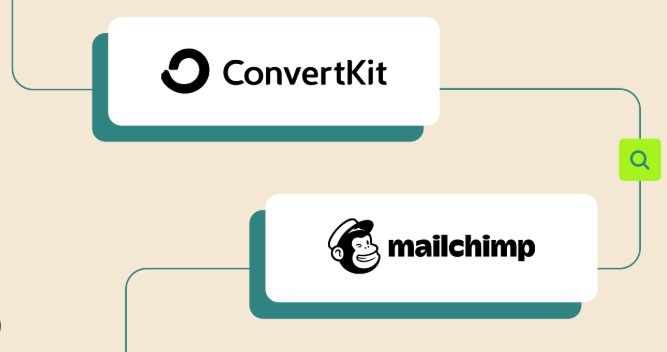Email marketing is arguably the strongest weapon within digital marketing. Whether you’re a blogger, affiliate marketer, small business, or content creator—having the correct email marketing platform is make-or-break for your growth strategy. Two of the most widely used platforms are Mailchimp and ConvertKit. Within this SEO-based guide, we’re going to look at which one is best for you and how to set up email marketing from scratch with either.
Mailchimp vs ConvertKit: Comparison
| Feature | Mailchimp | ConvertKit |
|---|---|---|
| Best For | Beginners, eCommerce, SMBs | Creators, Bloggers, Affiliates |
| Ease of Use | Simple drag-and-drop | Minimalistic and focused |
| Automation | Powerful but complex workflows | Easy-to-build visual automation |
| Free Plan | Yes (up to 500 subscribers) | Yes (up to 1,000 subscribers) |
| Landing Pages | Yes | Yes |
| Email Templates | Dozens of templates available | Few templates, more plain designs |
| CRM Features | Built-in CRM tools | Basic tagging and segmentation |
| Pricing (Starting) | Free → Paid from $13/month | Free → Paid from $15/month |
Which Is Better? Mailchimp or ConvertKit?
Use Mailchimp if:
You’re operating a small business or an online store.
- You desire pre-made templates and analytics.
- You require CRM + email under one roof.
- You are dealing with multiple client lists.
Use ConvertKit if:
You’re a content creator, blogger, or YouTuber.- You want minimal automation and tagging.
- You’re concerned with creating funnels and monetizing your audience.
- You’re more concerned about open rates and deliverability than sleek designs.
Verdict
If you’re a creator, ConvertKit is more conversion-driven.
If you’re a business or eCommerce brand, Mailchimp provides a wider set of features.
How to Set Up Email Marketing (Step-by-Step for Beginners)
No matter which platform you use, Mailchimp or ConvertKit, the setup is in a similar vein. Here are step-by-step instructions for both.
How to Set Up Mailchimp (Step-by-Step)
Step 1: Create a Free Account
Go to mailchimp.com → Sign up with your email → Verify
Step 2: Create Your Audience
Go to Audience → Audience Dashboard
Create list name, sender name, and email address.
Import contacts (CSV or manually).
Step 3: Build a Signup Form
Go to Audience → Signup forms
Customize your form (logo, fields, colors)
Get the embed code or share the hosted URL
Step 4: Build Your Email Campaign
Click Create → Email
Select Regular Email
Use the drag-and-drop editor to create your email
Add images, text, buttons, and links
Step 5: Schedule or Send Your Email
Set delivery time
Select your audience
Click Send or Schedule
Step 6: Automation (Optional)
Go to Automations → Customer Journeys
Set up triggers (e.g., when someone subscribes)
Construct the journey: welcome email → follow-ups
How to Set Up ConvertKit (Step-by-Step)
Step 1: Sign Up for Free
Go to convertkit.com → Create a free account.
Step 2: Configure Your Email List
Build a new form or landing page
Designate the form (headline, fields, button)
Select delivery settings (double opt-in or not)
Step 3: Integrate a Welcome Email
On form submission, include a welcome email
Navigate to Automations → Visual Automations
Set Trigger: Form Signup
Add Email → Write and Design → Save
Step 4: Create Email Sequences
Navigate to Sequences → New Sequence
Write 3–5 emails to nurture leads
Schedule them (e.g., Day 1, Day 3, Day 5)
Step 5: Start Sending Broadcasts
Go to Broadcasts → New Broadcast
Choose audience segment
Write your email → Preview → Send
Recommended Tips for Success
Segment your audience – Send relevant emails to the right group.
Use automation – Save time with welcome series or follow-ups.
Track performance – Analyze open rates, clicks, and conversions.
Test subject lines – A/B testing boosts open rates.
Keep it simple – Simple, value-based emails work best.

